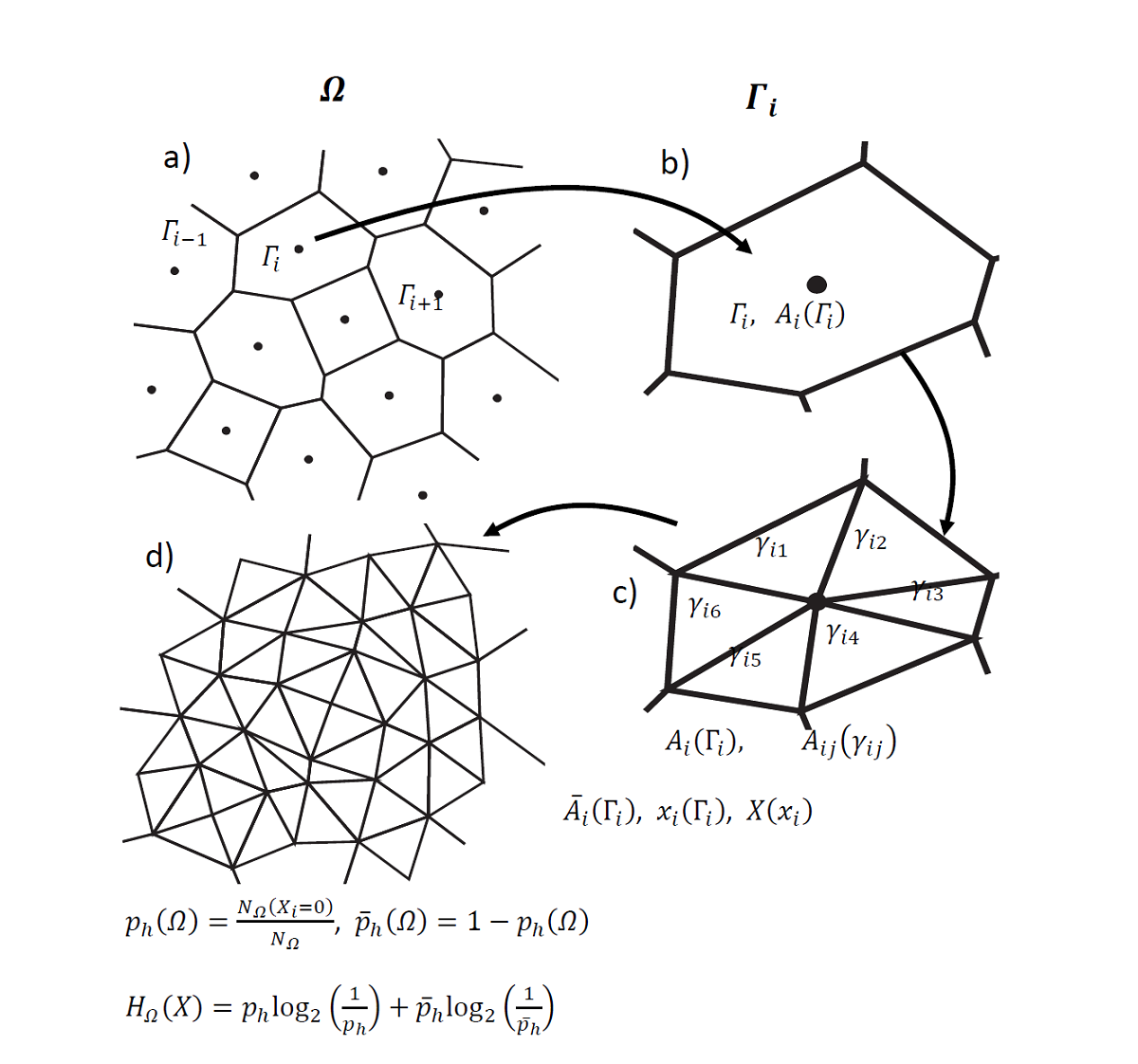Based on a measuring system to determine levels of spatial organization in 2D polygons (homogeneous or heterogeneous partition of defined areas) lying on principles of regularity, we propose the entropy term linked to the concept of “information”, from the “information theory field”, in order to obtain an information measurement regarding a quantity of or amount of information in the architecture of complex 2D biological organizations. The term “quantity” does not refer to the amount of data (size), but to the probability of a geometrical basic pattern within a set of possible statistical configurations regarding levels of homogeneity and heterogeneity. It is this notion of information that is important in information theory, and measures of information in units of bits, what we propose to use for measuring quantities of organization in the architecture of complex geometrical systems. Two complex systems are tested, biological and non biological in order to obtain experimental results, which are verified with the evaluation criteria “entropy”. Experimental results show that the lowest levels of information and entropy, in addition with low rates of heterogeneity and high rates of homogeneity are particular features of geometrical organizations in biological systems.

